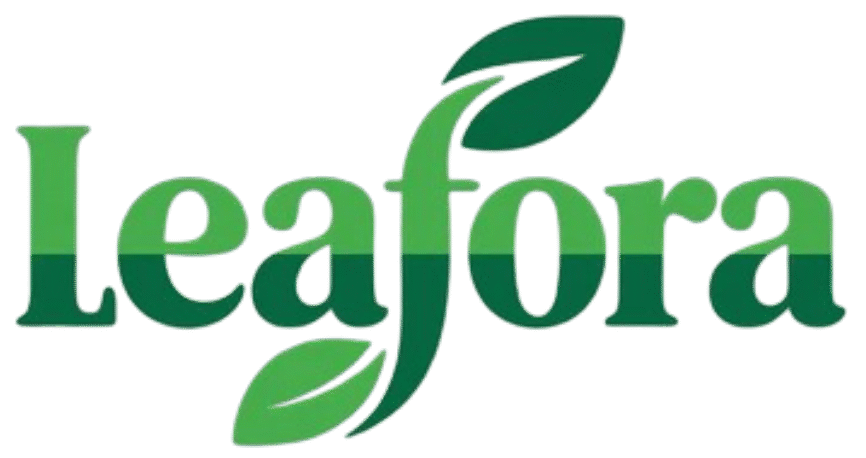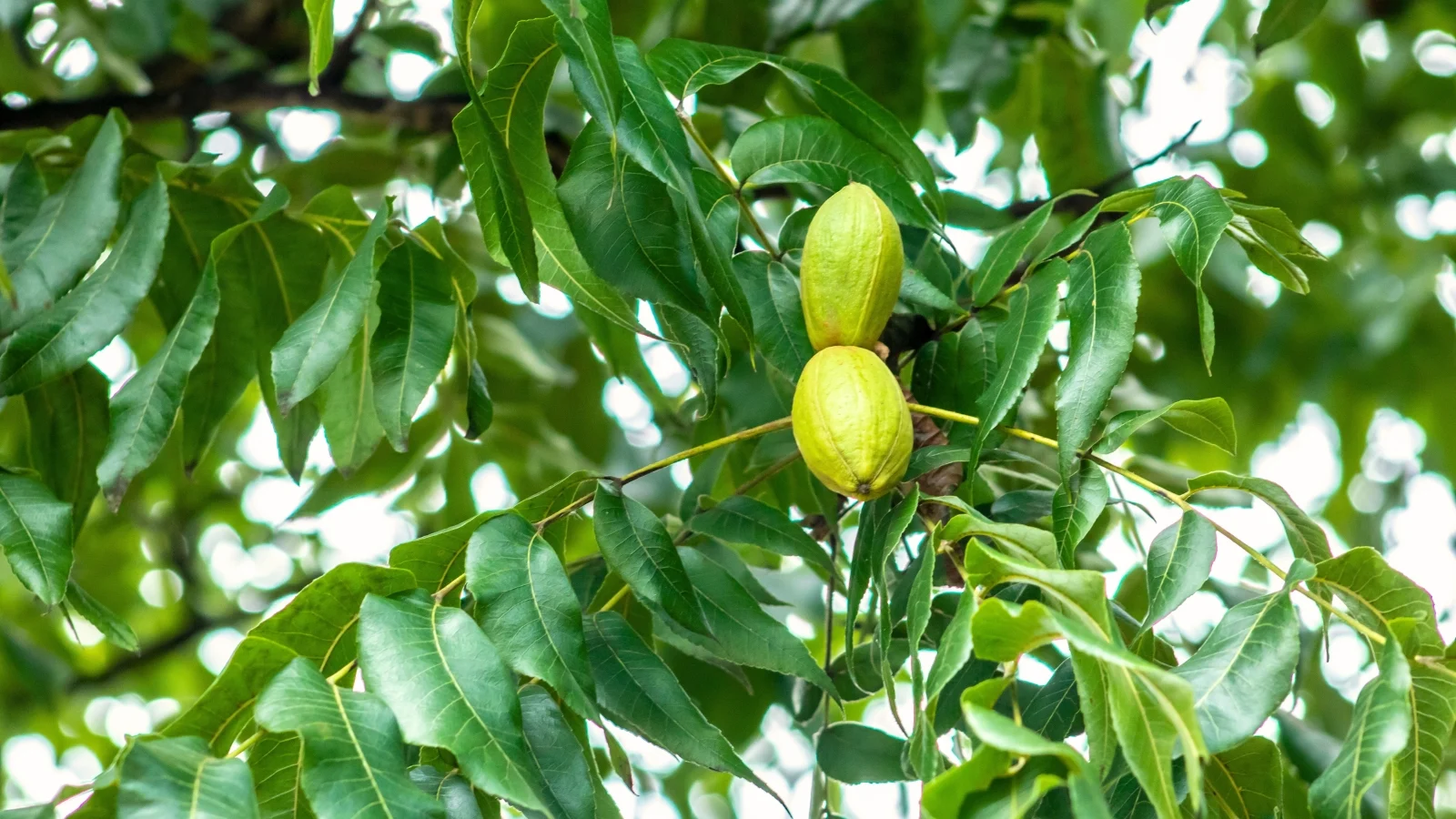I’d never be the first to tell another gardener not to try a new plant. Why would I? Experimenting in the garden is always fun—but planting fruit trees is a different story. Trees are usually permanent! They grow for decades, filling empty spaces with long, woody branches. Pick the wrong one, and you’ll be stuck dealing with the consequences.
Some fruit trees, like ginkgo and sweet cherry, are just plain messy, while others are invasive here in North America. Instead of planting species that push out native trees and shrubs in wild areas, it’s better to go with a native type or a hybrid cultivar that won’t take over the local ecosystem.
Callery Pear
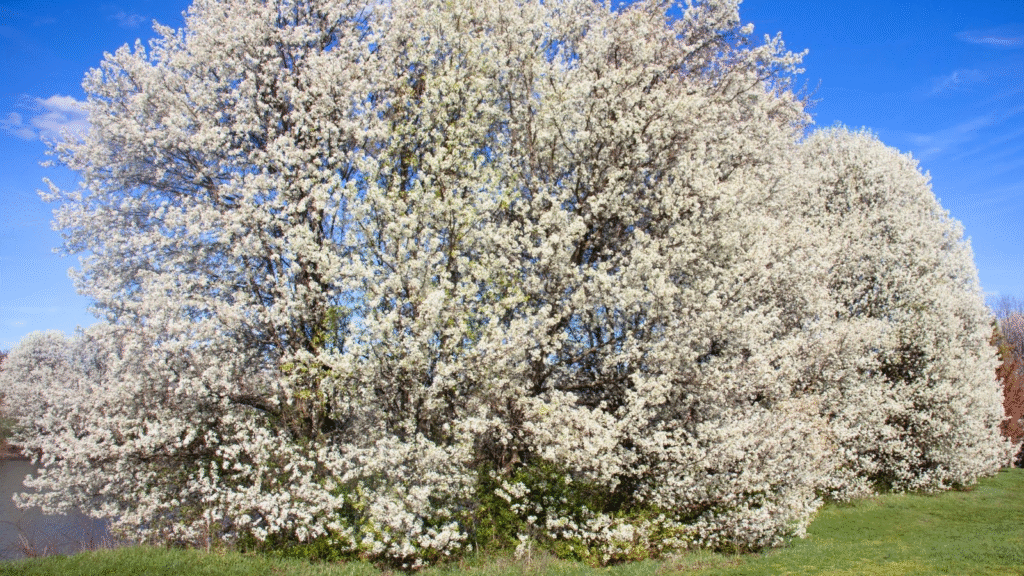
.
Botanical name: Pyrus calleryana
Sun needs: Full sun to partial shade
Height: 30–50 feet
Hardiness zones: 5–9
The Callery pear (also called Bradford pear) is a weedy pear variety originally from parts of Asia. It grows fast, producing weak, spongy wood that breaks easily. Sometimes, suckers sprout from the roots, forming dense thickets. Even fruitless cultivars aren’t safe—they can cross-pollinate with wild trees and revert to their invasive habits.
After blooming and fruiting, Callery pears spread their seeds far and wide. Birds eat the fruit and drop the seeds elsewhere, where they sprout in forests, crowding out trees that actually benefit the ecosystem. While pears aren’t native to North America, there are less aggressive hybrids that work much better in gardens—so skip the Callery pear and pick one of those instead.
Ginkgo
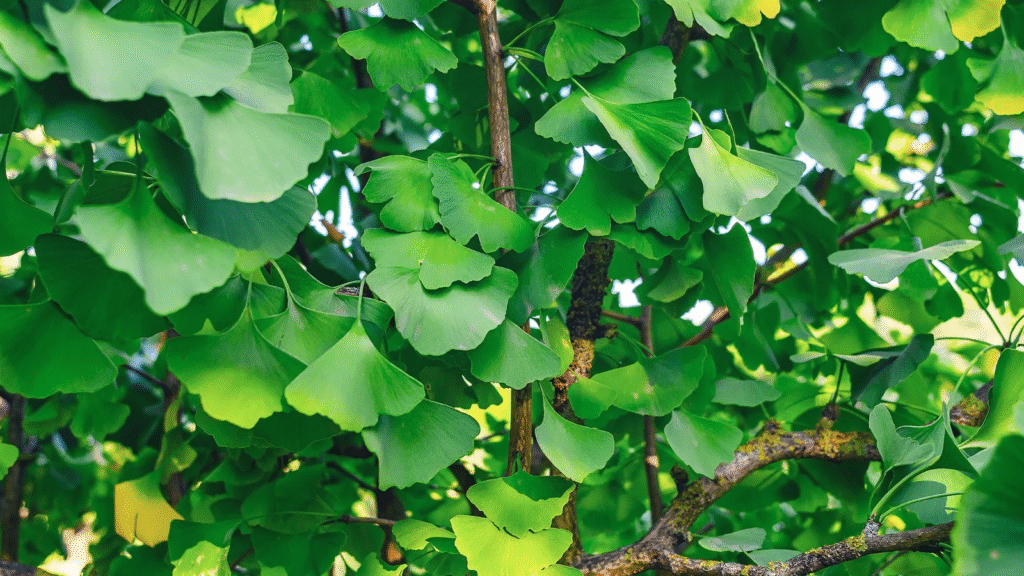
Botanical name: Ginkgo biloba
Sun needs: Full sun
Height: 50–80 feet
Hardiness zones: 3–9
Not all ginkgos are bad! They’re dioecious, meaning there are separate male and female trees. Male trees are the way to go—they produce pollen-filled flowers but no fruit. Female ginkgos? Avoid them at all costs. Their fruit smells awful! It drops to the ground and rots, releasing a sharp, nasty odor unlike anything else.
Most nurseries sell male cultivars since female trees aren’t in high demand. But that smelly fruit hides a secret—the nuts inside are edible! Just be sure to wash off all the toxic flesh before roasting them.
White Mulberry
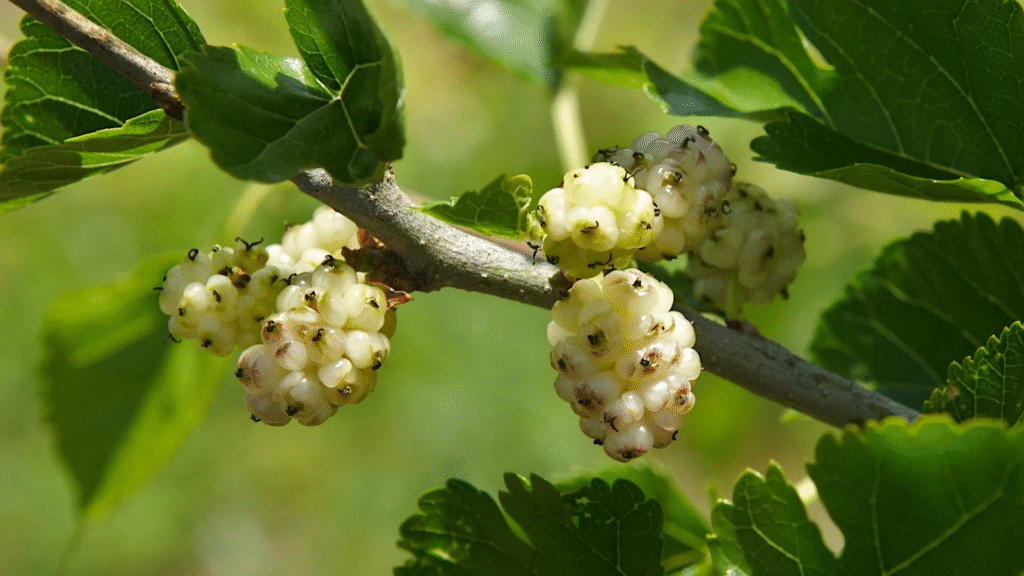
Botanical name: Morus alba
Sun needs: Full sun to partial shade
Height: 30–60 feet
Hardiness zones: 4–8
White mulberries are gorgeous but messy and invasive. Their small green-yellow spring flowers turn into fruits that resemble elongated blackberries, packed with seeds that sprout easily in mild climates.
If you’re on the East Coast, you’re in luck—there’s a native mulberry (Morus rubra) that’s perfect for edible fruit, summer shade, and pollinators. For West Coast and Midwest gardeners, blackberries or raspberries make great substitutes.
Sweet Cherry

Botanical name: Prunus avium
Sun needs: Full sun
Height: 15–30 feet
Hardiness zones: 3–8
Sweet cherries are delicious—perfect for eating fresh, baking into pies, or turning into jams. But the wild species and some cultivars spread aggressively, pushing out native trees and shrubs.
Instead, try North American natives like black cherry (Prunus serotina) in the East or bitter cherry (Prunus emarginata) in the West. Not all cherries are invasive, though! Many hybrid orchard varieties (especially dwarf types) work well in home gardens. A smaller tree means you’ll harvest all the fruit, leaving none to spread into the wild.
Higan Cherry
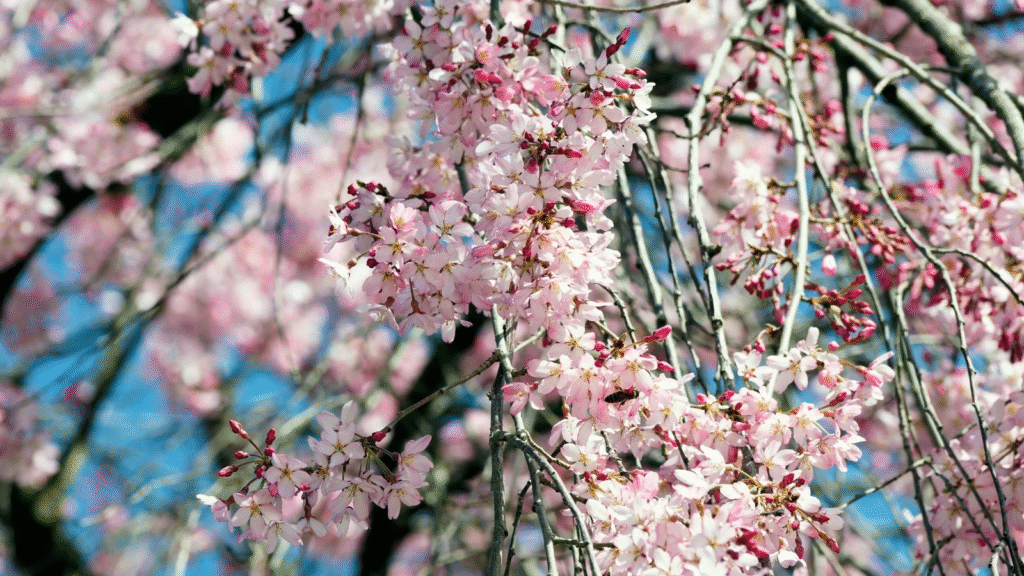
Botanical name: Prunus × subhirtella
Sun needs: Full sun to partial shade
Height: 30–50 feet
Hardiness zones: 4–8
Higan cherries are similar to sweet cherries but come from natural hybrids in Japan. In the U.S., these trees spread seeds into wild areas—birds and mammals carry them, leading to new trees popping up where they shouldn’t.
Fruitless flowering cultivars are the safer choice, offering gorgeous blooms without invasive fruit. If you really want edible cherries, stick with dwarf varieties that are easier to manage.
Peach
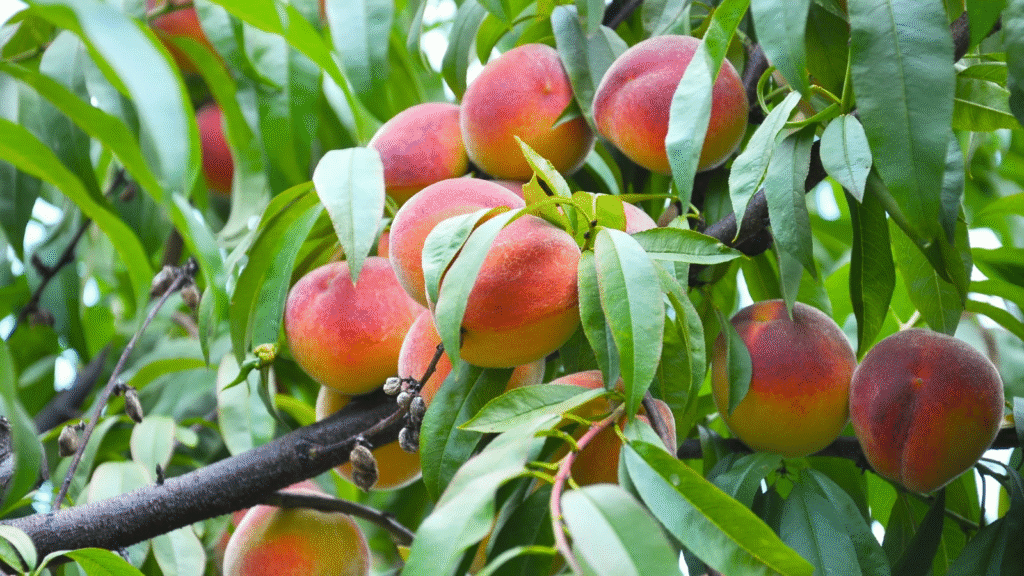
.
Botanical name: Prunus persica
Sun needs: Full sun
Height: 15–25 feet
Hardiness zones: 5–9
Peaches are sweet, juicy, and downright delicious—perfect for eating fresh, baking, or blending into smoothies. But in wet, cold regions like the Pacific Northwest, they struggle.
The biggest issue? Peach leaf curl, a fungus that warps new growth in spring. The fix? Plant resistant varieties or treat trees with organic copper fungicide before buds open.
Citrus
Botanical name: Citrus spp.
Sun needs: Full sun
Height: 10–30 feet
Hardiness zones: 9–11
Citrus trees (lemons, limes, grapefruits, etc.) thrive in subtropical and tropical climates. Some tolerate a light frost, but freezing temps will do them in.
For colder zones, grow citrus in pots near a sunny window or try hardy varieties like kumquats (edible skin!) or ‘Improved’ Meyer lemons, which handle zone 8 winters with protection.
Avocado
Botanical name: Persea americana
Sun needs: Full sun
Height: 30–40 feet
Hardiness zones: 10–12
Avocados love warmth and mild winters but can’t handle frost. Cold-hardy varieties might survive zone 8b, but expect setbacks in harsh winters.
Unlike dwarf citrus, avocados grow huge with deep taproots, making container life tough. Young trees can start in pots, but they’ll eventually need space to stretch out.
European Hazel
Botanical name: Corylus avellana
Sun needs: Full sun to partial shade
Height: 12–20 feet
Hardiness zones: 4–8
Hazels (or filberts) produce tasty roasted nuts and lovely shade. But skip the European variety—it can hybridize with native species, crowding them out.
Instead, try beaked hazel or American hazel, which stay smaller and play nice with local ecosystems.
Black Walnut
.
Botanical name: Juglans nigra
Sun needs: Full sun to partial shade
Height: 50–90 feet
Hardiness zones: 4–9
Black walnuts are native but not garden-friendly. They produce juglone, a chemical that stunts other plants’ growth, leaving barren patches beneath them.
If you have one, plant juglone-tolerant species like ninebark or nodding onion underneath.
Pecan
Botanical name: Carya illinoinensis
Sun needs: Full sun to partial shade
Height: 70–100 feet
Hardiness zones: 5–9
Pecans are North American natives, but they’re massive—up to 100 feet tall! You’ll need 2–3 trees for proper pollination, which is a lot for most yards.
If space is tight, try smaller nuts like almonds (zone 7+) or cold-hardy hazelnuts/walnuts (below zone 7).
